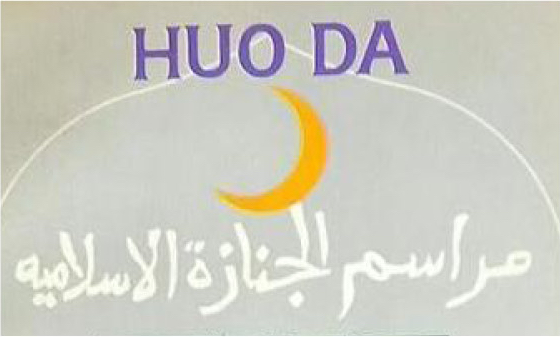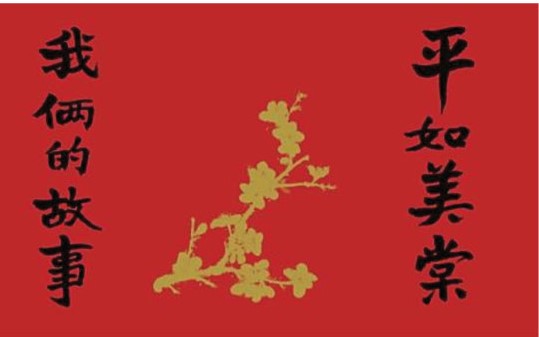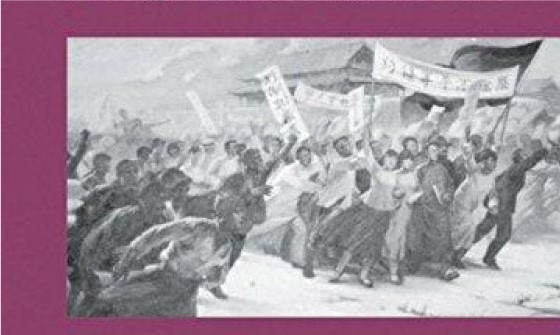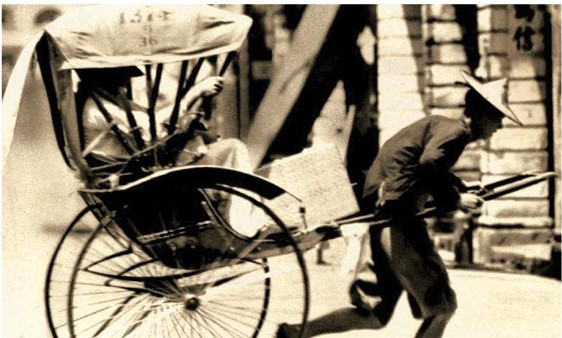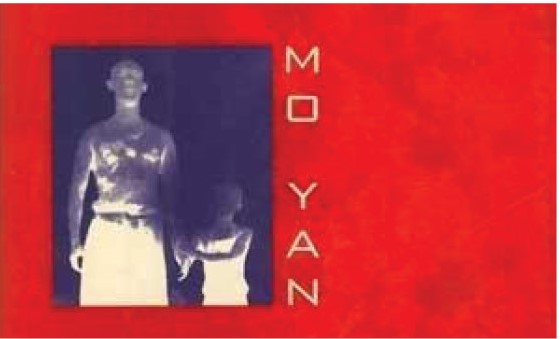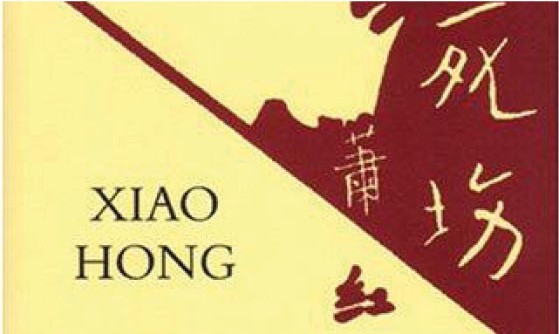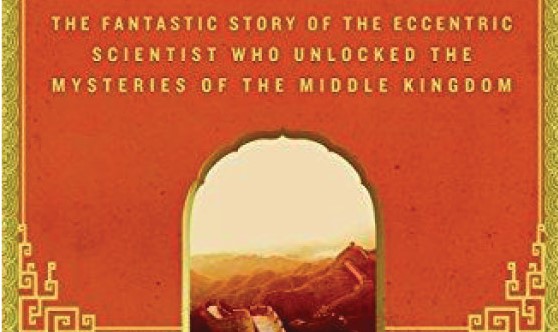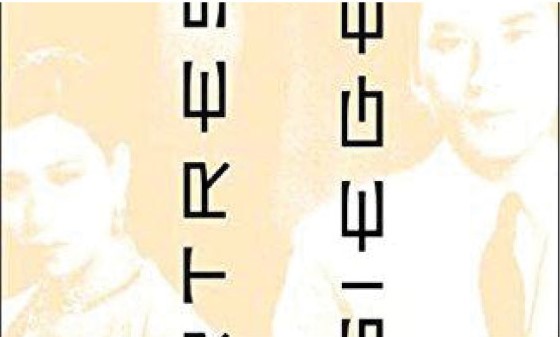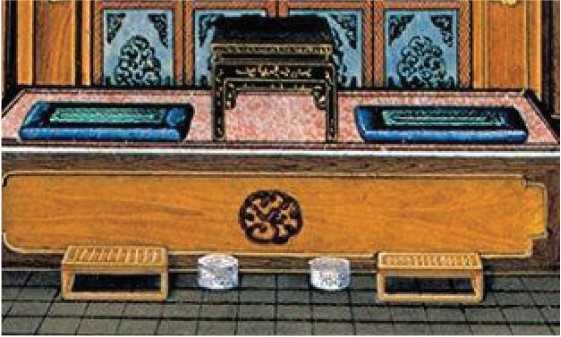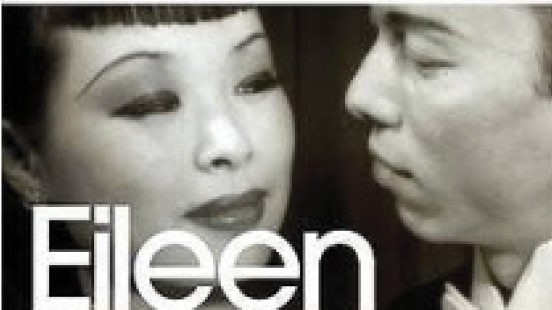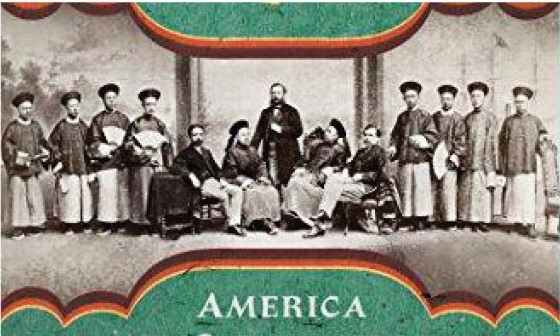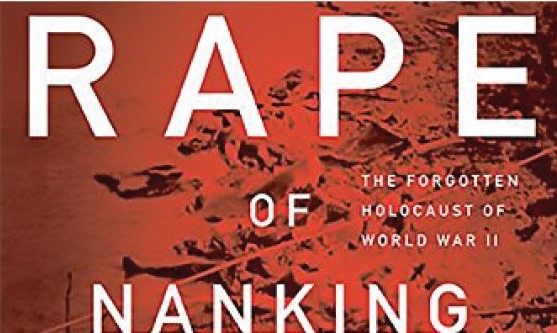The China Project Book List — time period: Republican Era to 1949
Sort by genre:
Culture/Society/Memoir | Literature | History | Politics | Business/Tech
Sort by time period of primary subject matter:
Ancient and Imperial China | Republican Era to 1949 | Mao to Tiananmen | 1990s to Pre-Olympics | 2008-Present
~
98. Forgotten Kingdom: Among the Nakhis of Likiang
Peter Goullart (John Murray Publishers, 1955)
This is a valuable first-person narrative from an author who spent almost a decade in Lijiang, Yunnan Province during the 1930s and 1940s. Originally a tour guide in Shanghai, the Russian-born Peter Goullart eventually became appointed by the Nationalists as chief of the Chinese Industrial Cooperatives in Lijiang, where he learned to speak Naxi, the language of the dominant ethnic group. Descriptions of his encounters with local traders, merchants, and inn keepers are sensational (like the time a Muosuo woman offered herself as “payment” for medicine), and it’s hard to believe that the story of his kidnapping by upland bandits wasn’t embellished. Still, Goullart’s highly attuned descriptions of the Han Chinese, Tibetans, Nakhi (Naxi), and Lolos (Yi) merchants from all walks of society present a vivid portrait of an ethnically diverse southwest China during a pivotal time in the country’s history.
— Rosalyn Shih
95. The Jade King: History of a Chinese Muslim Family
Huò Dá 霍达, translated by Guan Yuehua (Panda Books, 1992)
It’s a sad fact that many important novels of the late-1980s and early-1990s, a golden age for contemporary fiction, remain untranslated, or received subpar or abridged translations. The Jade King, or Funeral of a Muslim, as the title is also sometimes rendered, is one of those books. Huo Da’s novel is a family epic based on her own upbringing as a Hui Muslim in China’s capital. The story of Han Ziqi, an orphan raised by Hui and tutored in the carving of jade ornaments, ranges from the late Qing Dynasty to the end of the Cultural Revolution, and from Beijing to London. Shortly after The Jade King’s release, it did receive an abridged translation, but the book remains virtually unknown in the English-speaking world, despite its enduring popularity in its home country, where it has won the Mao Dun Literature Prize, sold close to five million copies, and been adapted for film and television.
— Dylan Levi King
91. Midnight in Peking: How the Murder of a Young Englishwoman Haunted the Last Days of Old China
Paul French (Penguin Books, 2012)
The story of 19-year-old Pamela Werner’s grisly murder and postmortem dismemberment and dissection in 1930s Peking was mostly forgotten by the time Paul French began investigating the story in the mid-2000s. French sets his reconstruction of the events of 1937 against the backdrop of a city and a nation on the verge of monumental change. The novelistic retelling of the Werner story is as compelling as French’s portrait of Peking in the dying days of Old China, and the city’s collection of expatriate misfits, colonial holdouts, weirdos, and perverts.
— Dylan Levi King
85. With Love and Irony
Lín Yǔtáng 林语堂 (Blue Ribbon Books, 1945)
This collection of essays from social commentator and polyglot Lin Yutang — a Chinese scholar with the rare gift of being able to address a Western audience in plain English prose — is a phenomenally digestible primer on “the Chinese,” an attempt by the author to dispel the image of inscrutability and exoticism which dogged public perceptions of China at the time (and, regrettably, still does to this day). Lin could perhaps be called one of the first anti-Orientalists, but also a debunker of the Yellow Peril.
Despite being written at a time when China was fractured, subjugated, and ablaze, this book is replete with good-humored musings on the habits and thinking of the “average Chinese,” a man (sadly, Lin’s views on women are not ahead of its time) who prefers goldfish and canaries to guns and cannon, and who doesn’t need to be “right” to win an argument with a neighbor —- merely “reasonable.”
One can derive comfort from Lin’s genial assessment of the Chinese as, ultimately and eternally, “reasonable people leading reasonable lives.” He paints a picture of a people too thoughtful for demagoguery, too placid for warfare, too happy-go-lucky for ruthless exploitation of others. His words speak to those of us who try to square the reality of our intellectually dynamic, generous, and open-minded Chinese friends with their monolithic state, and remind us that there is indeed a difference.
— Jack Smith
84. Cinderella’s Sisters: A Revisionist History of Footbinding
Dorothy Ko (University of California Press, 2007)
A self-proclaimed “alternative history” of the practice of footbinding in China, Cinderella’s Sisters is a gratifyingly challenging book. The premise is straightforward, if somewhat provocative: The dominant narrative of footbinding as a painful patriarchal practice imposed upon women for the pleasure of men is an ahistorical oversimplification — and one that serves to obscure the voices and experiences of the women at the heart of the story. In her complex book, which simultaneously serves as a social history, literary criticism, and study of material culture, Dorothy Ko seeks to “unwrap” footbinding in an effort to reveal the desires, motivations, and lived experiences of the women themselves who endured and to an extent drove the practice for the thousand or so years it persisted. While Ko, who teaches history at Barnard College, is careful to never fully condone or condemn footbinding, and does not shy from the unpleasant — and, as many would persuasively argue, brutal — realities of the practice, she does emphasize that for many Chinese women, bound feet were integral to their perceptions of dignity and self-worth. In this vein, Ko explores how different styles of footbinding emerged and flourished at different periods and locations, locating the various methods of breaking, bending, and binding the female foot within the more conventional history of Chinese fashion. Drawing on an array of sources, Ko thus convincingly seeks to dispel the perception of footbinding as a practice uniformly and unidirectionally inflicted upon women by men, and instead weaves a more complex tale that allows for an “open-ended space,” to use Ko’s phrase, in which the resilient voices of those whose feet were bound might finally find an audience.
— Siodhbhra Parkin
79. The Man Awakened from Dreams: One Man’s Life in a North China Village, 1857-1942
Henrietta Harrison (Stanford University Press, 2005)
In this beautifully written work of local and personal history, author Henrietta Harrison provides a gentle yet compelling corrective to the tendency for books about China to focus on individuals and ideas with outsize impact. As she writes in the preface to this fascinating account about an ordinary man living an ordinary life in a tiny village in Shanxi Province, “Real humanity in historical accounts is all too often restricted to great leaders, famous writers, or original thinkers.” Without a trace of irony, she notes of the eponymous main character of her book: “Liu Dapeng was none of these.” Using the 400 or so volumes of personal diaries Liu left behind, Harrison paints a deeply human portrait of Liu and his family as they struggle to cope with the massive changes that gripped China in the late-19th and early-20th century. At the same time, Harrison artfully demonstrates how seemingly abstract developments such as the gradual shift away from Confucian ideology had immediate and deeply felt personal impacts. The Man Awakened from Dreams is therefore an important reminder that when it comes to a country as vast and complex as China, the best stories that teach us the most are not always the ones taken straight from the headlines.
— Siodhbhra Parkin
73. Public Passions: The Trial of Shi Jianqiao and the Rise of Popular Sympathy in Republican China
Eugenia Lean (University of California Press, 2007)
In the fall of 1925, a warlord named Shi Congbing was decapitated by his rival. His head stuck was stuck on a pole outside a train station. Ten years later, Shi’s daughter — Shi Jianqiao — tracked down her father’s murderer to a temple, where he was leading a sutra-chanting group. She dumped three rounds from a Browning semi-automatic into the back of his head, splattering his brains all over his prayer circle.
Eugenia Lean gives a fine account of the gory details, the media circus, and the legal wranglings that followed, but her purpose is teasing out something about the sociopolitical character of the Republican Era. Lean uses the Shi Jianqiao case to illustrate a new “popular sympathy” (tóngqíng 同情) in the Republican Era, when a new urban audience was able to follow updates in the case almost as they happened. One of the first trials by media, an unruly debate took place between those upholding rule of law (murder is illegal) and more ancient ethics (avenging your father’s murder is justified). We won’t give away the ending, but just know that Shi Jianqiao — whose spirit is revived in Lean’s book — went down in history as a bad-ass heroine.
— Dylan Levi King
67. To Live
Yú Huá 余华, translated by Michael Berry (Anchor, 2003)
Yu Hua is known for stories that capture an uncanny mix of comedy and tragedy in the lives of ordinary people in extraordinary circumstances. His seminal novel To Live chronicles the life of Xu Fugui, a hapless witness and participant in some of contemporary China’s most iconic historical junctures, from the tail end of imperial China through the Cultural Revolution. The scope and tone of the novel resembles Forrest Gump, another famous work of fiction whose titular character stumbles through decades of tumultuous change. To Live is a story full of heartbreaking tragedy that is deliberately devoid of maudlin sentimentality. By juxtaposing unadorned, matter-of-fact language against senseless horrors caused by rash decisions made by China’s political pantheon, Yu paints an extremely sympathetic portrait of China’s humble 老百姓 (lǎobǎixìng — “the people”), of their resilience and resignation. Though Fugui’s life is marred by loss and trauma, his capacity to accept the enormity of the suffering in his life will leave the reader in awe.
— Frankie Huang
56. Our Story: A Memoir of Love and Life in China
Ráo Píngrú 饶平如, translated by Nicky Harman (Pantheon, 2018)
Rao Pingru was 87 when he began to write the story of his life, focusing on his long marriage to his recently deceased wife, Meitang. In the absence of surviving photographs, he taught himself to paint, and so it is that Our Story is illustrated with his charming, quirky pictures.
Born in 1922, Rao received a Confucian education, and acquired an abiding love of classical Chinese poetry. As a young man, he fought in the anti-Japanese War (he paints the bloody battles vividly), escaping death by a whisker on several occasions. When peace came, his father arranged his marriage to Meitang. Rao gives us fascinating glimpses of the life they led in the late-40s and early-50s: their travels around China, local food specialities (illustrated in great detail), and his desperate attempts to find a job. Eventually, the couple settled in Shanghai, where he worked as an editor and they raised five children — before he was sent away to do reform through education during the Cultural Revolution. In the last part of the book, Rao describes in heartbreaking detail how he cared for Meitang as she battled diabetes and dementia, and mourned her death.
Rao became a TV celebrity when Our Story was first published in Chinese. He is now 97, and recently appeared at the Shanghai International Literary Festival.
— Nicky Harman
54. The Chinese Enlightenment: Intellectuals and the Legacy of the May Fourth Movement of 1919
Vera Schwarcz (University of California Press, 1986)
No period is more crucial to the understanding of modern Chinese intellectual history than the May Fourth Movement, centering on the protests of 1919 but also describing the five or so years preceding and following that event. In this scholarly book, Vera Schwarcz examines the tension at the heart of the movement: between the exigencies of national salvation (救国 jiùguó) and enlightenment (启蒙 qǐméng), between nationalism and cultural iconoclasm. How, she asks, did thinkers of the May Fourth period reconcile the urgent need they felt to save the nation — from warlords, from imperialist aggressors — with the view so many of them shared that it was China’s very traditionalism, its national essence, that was at the root of its problems?
— Kaiser Kuo
53. Border Town
Shén Cóngwén 沈从文, translated by Jeffrey C. Kinkley (Harper Perennial, 2009)
Shen Congwen, born at the turn of the last century, was a marginal figure in the New Culture Movement of the 1920s, and perhaps because of his age and his political leanings (or lack thereof), never attained the same level of renown as writers like Lu Xun. Border Town, considered one of Shen’s masterworks, is set in West Hunan and draws deeply from the well of local culture to tell the story of local girl Cuicui and her courtship by two brothers. Shen’s career as a novelist was ended in 1949 by a string of purges, but when he was rehabilitated in the late 1970s, his writing was rediscovered by a new generation. The roots-seeking movement of the 1980s, whose writers proclaimed the need to return to native place and local culture, took Shen Congwen as their model. The literary DNA of Shen Congwen’s Border Town can be found in the most important novels of the past 40 years, including Jia Pingwa’s Qinqiang, Han Shaogong’s A Dictionary of Maqiao, and Mo Yan’s Red Sorghum.
— Dylan Levi King
49. Rickshaw Boy
Lǎo Shě 老舍, translated by Howard Goldblatt (Harper Perennial, 2010)
Xiangzi just wants a new rickshaw with which to ply an honest trade. But 1920s Beijing (“Beiping” at that time) is tough, and he is thwarted by war and camels, swindlers and women, love and disease. Hope flickers in Xiangzi’s misguided sense of purpose, but even that is progressively snuffed out by a society that refuses to reward virtue, ambition, or effort. Rickshaw Boy is a classic, a popular novel by one of China’s greatest 20th-century writers, with an earlier translation even becoming a bestseller in the U.S. Its depictions of the city, from its brothels to gates, its alleyways to still-recognizable landmarks like Tiananmen and the Temple of Heaven, are to be savored. However, be warned: read in the context of Lao She’s eventual suicide amid persecution during the Cultural Revolution, this “darkly comic” book at times feels simply sad. Rickshaw Boy isn’t merely a critique of individualism — it shows us how little agency any of us have, yoked as we are to our machines, bearing the weight of the world’s epithets and perpetually running in circles.
— Anthony Tao
44. Red Sorghum
Mò Yán 莫言 (pen name for Guǎn Móyè 管谟业), translated by Howard Goldblatt (Viking Adult, 1994)
Red Sorghum is the first novel by 2012 Nobel laureate Mo Yan. It recounts the convoluted — and non-chronological — story of two generations of a particular family, in the voice of a member of the family’s third generation, from Gaomi county, Shandong Province. In between pursuing personal vendettas and other local politics, Grandma, Grandpa, and Father own and run a distillery, which is famous for making liquor out of the locally-grown red sorghum. It is impossible to summarize succinctly, but suffice it to say there are exciting descriptions of banditry and guerrilla warfare, as well as love and betrayal. The novel spans the lawless Warlord era and into the Japanese invasion of China during the Second World War, with also a few moments of the narrator’s present in the Communist period. Gaomi, which is a fictionalized version of Mo Yan’s own birthplace, serves as the setting for many of his novels and is often compared to Faulkner’s Yoknapatawpha County. The Nobel committee that selected Mo Yan praised him for a prose style of “Hallucinatory Realism” — this seems to be a way of indicating a Magical Realist style without using that term, to which Mo Yan has objected in the past — which is on full display in Red Sorghum.
— Andrew Stuckey
38. The Field of Life and Death & Tales of Hulan River
Xiao Hong 萧红 (pen name of Zhāng Nǎiyíng 张乃莹), translated by Howard Goldblatt (Cheng & Tsui, 2006)
Chinese literature owes a great debt to female authors, who have often been dismissed as sentimental writers incapable of broadening their vision beyond trifling stories about love affairs, family issues, and motherhood. This gendered narrative of women’s writing is laughably flawed, as this two-book collection by Xiao Hong, one of China’s first and foremost feminist writers, demonstrates.
Xiao’s writing career lasted only eight years, before she died at age 31, but she published prolifically in that short span. At the heart of her work is women who lead lives of loneliness, desperation, and oppression in a world where patriarchy is seen as “natural.” She published her debut novel, The Field of Life and Death, when she was only 23, after having experienced a series of devastations, including the death of her mother and abandonment by her longtime partner, who left her while she was pregnant. Drawing inspiration from her own suffering, Xiao weaves together three family sagas in the Harbin countryside, spanning several decades. Tales of Hulan River, published five years later, is an autobiographical fiction based off Xiao’s childhood in a small town called Hulan, filled with rural villagers seeking their identities in a time of change.
— Jiayun Feng
37. The Man Who Loved China: The Fantastic Story of the Eccentric Scientist Who Unlocked the Mysteries of the Middle Kingdom
Simon Winchester (Harper, 2008)
The “man who loved China” is Joseph Needham, an eccentric young biologist — and adventurer, nudist, accordionist, chain-smoker, etc. — who arrived in Chongqing during the Second World War and was instantly entranced. He spent the next decade producing what would become a 15,000-page, 24-volume encyclopedia called Science and Civilisation in China, an authoritative account of a country no Westerner had ever known with such depth or clarity. As author Simon Winchester giddily relays, “Needham slowly and steadily managed to replace the dismissive ignorance with which China had long been viewed — to amend it first to a widespread sympathetic understanding and then, as time went on, to have most of the western world view China as the wiser western nations do today, with a sense of respect, amazement, and awe. And awe, as fate would have it, was in time directed at him as well.” The Man Who Loved China is a delightful read about a distinguished scientist whose manic energy leaps off the pages.
— Anthony Tao
34. Fortress Besieged
Qián Zhōngshū 钱钟书, translated by Jeanne Kelly and Nathan K. Mao (Gardners Books, 2005)
Like many of his literary peers in the Republican Era, Qian Zhongshu received a fine education, first at Tsinghua, then at Oxford and the University of Paris, but, unlike so many of his fellow writers, he eschewed explicit political work for pointed satire of middle-class neuroses. In the words of Christopher Rea, translator of the author’s Humans, Beasts and Ghosts: Qian’s goal was to establish an “autonomous republic of letters.” Fortress Besieged tells the story Fang Hongjian, his voyage back to China with a fake diploma, his adventures in courtship and marriage, and his attempts to snag an academic job. The “fortress” that is besieged in the title is the institution of marriage, with Fang throughout the book trying to storm the gate or free himself. The book’s humor, wit, and keen insights into human nature made it an instant classic.
— Dylan Levi King
32. Peking Story: The Last Days of Old China
David Kidd (Aurum Press, 1988)
A book that remained fairly obscure until being picked up for reissue by the New York Review of Books’ publishing wing, Kidd’s Peking Story is one of the truly unique records of a foreigner in China. Kidd arrived in Beijing (then known as Beiping) at a moment of great change, two years before the city fell to the Communists — bad timing for an aesthete in love with the material culture of the Old China, even worse timing for a man married into an aristocratic Manchu family. He writes odes to the silks, bronzes, and elegant paintings that furnish the mansion of the Yu family, then watches all of it tossed into the fire and the aristocrats turned out into the street. The son of a Kentucky coal boss, raised in Detroit, the tale of Kidd is just as captivating as the story of aristocratic collapse. The details of Kidd’s later life and the fact that several of his contemporaries have raised concerns about the accuracy of Kidd’s account only adds to the mystery.
— Dylan Levi King
29. Forgotten Ally: China’s World War II, 1937-1945
Rana Mitter (Houghton Mifflin Harcourt, 2013)
Rana Mitter’s book on China during the Second World War looks not just at the Communists in Yan’an or the Nationalists in Nanjing and their wartime capital of Chongqing: He also takes an unblinking look at the puppet regime of Wang Jingwei 汪精衞, who capitulated to the Japanese in 1937. The book makes use of many newly available sources, including the diary of Zhou Fohai 周佛海, who served at various points under all three regimes, as one of the founders of the CCP in 1921, a member of the Kuomintang after 1924, and finally, at the “peak” of his career, second in command under Wang Jingwei. Chiang Kai-shek, often portrayed as a sniveling villain in the Chinese propaganda of an earlier time, and as venal, vain, corrupt and incompetent in the account burned into the American consciousness by Barbara Tuchman’s Stillwell and the American Experience in China, emerges in this telling as a much more complex and conflicted character.
— Kaiser Kuo
26. Four Hundred Million Customers
Carl Crow (Harper & Brothers, 1937)
When Missourian Carl Crow stepped onto the shore of Shanghai’s Bund in the summer of 1911, his only credo as he arrived was to “just have fun.” He did, and along the way saw a dynasty fall, a republic rise, warlords run rampant, and Shanghai boom. He launched newspapers, magazines, and an advertising agency, and was instrumental in creating the legendary Shanghai calendar girl. He learnt every trick of the China trade — got fooled plenty, dreadfully let down, became quite rich, was surprisingly supported, and made a lot of friends. He compiled all the lessons he learned — from protecting your valuable IP to understanding the uselessness of any paper contract; from guanxi to bribery; and most of all, the unrealistic dreams of the foreign businessman who, when they thought of China, saw only vast profits on the horizon and missed the poverty, local competition, and nonexistent infrastructure — and put them down in his 1937 book, Four Hundred Million Customers, which became a New York Times bestseller, was universally praised, and became the handbook for American business in China, translated into a couple of dozen languages. And then…war, revolution, Maoism. It was to be 50 years before Western business came back to China. Having largely forgotten Crow, they had to learn all those lessons again, the hard way. If only they’d looked at their grandfather’s bookshelves.
— Paul French
25. Love in a Fallen City
Eileen Chang (Zhāng Àilíng 张爱玲), translated by Karen S. Kingsbury (NYRB Classics, 2006)
Love in a Fallen City is a collection of six short stories by charismatic writer Eileen Chang. First published in the 1930s and ’40s, her stories are about love, longing, troubled family lives, and political and sexual ambiguity amid social constraints and upheaval. In her own words, she only tried to describe “the little things that happen between men and women.”
Little things they may be, but they’re cannily observed, psychologically fraught, full of intrigue, and expressed with Chang’s trademark poise. The story “Love in a Fallen City” is among Chang’s most popular. In it, a handsome couple — Fan Liuyuan, a playboy who grew up in England, and Bai Liusu, a divorcee stuck in a household dominated by her father’s extended family in Shanghai — engage in a game of hide and seek, each with their own agenda: he to regain his Chinese identity, she to remarry. It’s war that pushes them together and perfects their love.
I’d also recommend Lust, Caution, Chang’s most controversial book (now a movie by Ang Li). I first encountered Chang’s works in the mid-1980s when I was a factory worker in Nanjing, seeking an escape through reading and writing. I was immediately fascinated by her characters: well-drawn, complex, and often desperate, differing dramatically from the so-called “tall, big, and perfect” characters of revolutionary literature or the one-dimensional protagonists in the “scar literature” of the time, when the protagonists were all victims lacking moral ambiguity. A forerunner of Chinese modernist writing, Chang’s prose is sharp and imaginative, winning her millions of fans all over the country.
— Lijia Zhang
20. The Beautiful Country and the Middle Kingdom
John Pomfret (Henry Holt and Company, 2016)
Early in John Pomfret’s wildly ambitious 700-page masterpiece on the history of U.S.-China relations is an observation that sets the theme for the entire book: “If there is a pattern to this baffling complexity, it may be best described as a never-ending Buddhist cycle of reincarnation. Both sides experience rapturous enchantment begetting hope, followed by disappointment, repulsion, and disgust, only to return to fascination once again.” Indeed, many of the characters throughout the nearly 250 years of U.S.-China interaction can be found today, from the idealistic missionaries seeking to “change China” to the Chinese students with American educations who return to become their country’s political and business elite.
And that’s what makes The Beautiful Country and the Middle Kingdom such a captivating read. Its thoroughly researched stories of riveting individuals throughout history put today’s U.S.-China relationship in much-needed context, particularly as that relationship falls under increased strain. Pomfret writes what is at its core a turbulent love story of two nations whose passions swing violently between desire and loathing. It’s a recipe for a dysfunctional relationship, but a relationship that defines our present and future — and one that makes for a fascinating book.
— Elliott Zaagman
15. Wealth and Power: China’s Long March to the Twenty-first Century
Orville Schell and John Delury (Random House, 2013)
Through lengthy historical profiles of 11 iconoclasts who changed China — all reformers or revolutionaries in one way or another — this wonderful book shows how China traveled the road from the Qing Dynasty to today, driven by the same quest for 富強 fùqiáng: wealth and power.
We are introduced at the start to Wei Yuan and Feng Guifen, two 19th-century scholars who pioneered the 自強 zìqiáng, or “self-strengthening school,” and warned of the growing gulf between China and the West. Then there are the reformers, Kang Youwei and Liang Qichao (as well as Zeng Guofan and Li Hongzhang), whose efforts were met with mixed responses from the Empress Dowager Cixi, the last ruler of the Qing. Next are Sun Yatsen, the 国服 guófú (or “father of the nation” — and its first president, if only for 45 days before military leader Yuan Shikai took over), and New Culture intellectual Chen Duxiu, who was integral to the May Fourth Movement during the early days of the Republic. More familiar figures then emerge, including Chiang Kai-shek, Mao Zedong, Deng Xiaoping, Zhu Rongji — who oversaw China’s economic miracle in the 1990s and early 2000s — and Liu Xiaobo, who protested for political reform and was punished severely for it.
The individuals profiled are helpfully collated with chronologies, quotes, and multimedia resources at Asia Society’s “Wealth and Power Book Project,” which gives a clear and concise overview of a century and a half of China’s modern history and the visionaries who shaped it. China’s pursuit of power and prestige continues today with Xi Jinping, China’s latest reshaper, who would make for a fine epilogue in a new edition of Wealth and Power — a man whose legacy is open-ended but sure to create a lasting imprint on Chinese history.
— Alec Ash
8. The Rape of Nanking: The Forgotten Holocaust of World War II
Iris Chang (Basic Books, 1997)
Hailed after her suicide as one of the last victims of the Nanjing Massacre, Iris Chang’s memorial sits among those brutally killed in the weeks following the city’s capture. The Rape of Nanking propelled what Chang termed “the forgotten holocaust” back into the public consciousness, leading in turn to death threats from Japanese ultra-nationalists amid an 18-month book tour. The book is a searing exploration of the nature of humanity and that “thin veneer of civilization” which, once stripped, led the Japanese Imperial Army in Nanjing to kill more civilians in six weeks than the initial death tolls of Hiroshima and Nagasaki combined.
Given Chang’s mission to give a voice to the (politically convenient) silence of its victims, The Rape of Nanking assumes no prior knowledge of readers. While pilloried by less-renowned historians for her lack of academic rigor, Chang was responsible for uncovering multiple primary sources, including the meticulously thorough diaries of two prominent defenders of the international safety zone, credited for saving the lives of at least 200,000 civilians. In examining the massacre through the various lenses of perpetrator, victim, and finally international observer, Chang tasks readers to draw their own conclusions regarding the heavily disputed events of 1937-38, putting in context the complicity of foreign governments to whom the subject was inconvenient, East Asia scholars who considered it taboo, and the ongoing outrage at continued reticence of Japanese officials to acknowledge and atone for the sadistic rape, torture, and murder of half of Nanjing’s population.
— Nell Greenhouse
6. The Good Earth
Pearl S. Buck (John Day, 1931)

The Good Earth is a sweeping novel in the tradition of English literary realism, but at its core is unmistakably Chinese. At her acceptance speech for the Nobel Prize for Literature in 1938, titled “The Chinese Novel,” Pearl S. Buck praised the Chinese novelist as a writer for the people: “His place is in the street. He is happiest there.” She concluded, “He must be satisfied if the common people hear him gladly. At least, so I have been taught in China.”
She was well taught. For the first half of her life, Buck felt more at home in China than anywhere else. She learned classical Chinese at an early age, attended school in Shanghai, and moved to Anhui Province soon after her first marriage, an experience that depressed her but provided the basis for The Good Earth, which was published in 1931 to critical acclaim and commercial success. The novel begins with Wang Lung’s marriage to O-lan, hardscrabble characters who form the story’s backbone. They persevere through hardship and war brought about by the fall of the Qing Dynasty, experience fortune and joy and scandal, desire like sickness, and devotion that might as well be called love. They break our hearts with the way they fight against the forces of life, and through it all, there is no question that they reside in the proverbial street, surviving off a land that any Chinese novelist would be proud to claim as their own.
— Anthony Tao
4. The Real Story of Ah-Q and Other Tales of China: The Complete Fiction of Lu Xun
Lǔ Xùn 鲁迅 (pen name of Zhōu Shùrén 周树人), translated by Julia Lovell (Penguin Classics, 2010)
This is an essential collection of work from China’s greatest 20th-century writer, expertly translated by Julia Lovell.
In his 1921 satirical novella The Real Story of Ah-Q, Lu Xun captures the opportunism, anti-intellectualism, and narcissism of late-Qing, early-Republican China. From the village of Weizhuang, the educated, jobless Ah Q recoils at his oppressors — those who are above him in the hierarchy — but bullies those who are below him. He confronts humiliations with self-deception, convincing himself of his “spiritual victories.” One of the most famous scenes is at the opening: After Ah Q brags about being from the same clan as one Mr. Zhao (赵太爷), he is summoned by a tyrant who slaps him in the face: ‘How could you be named Zhao! Do you think you are worthy of the name Zhao?” Ah Q is often seen as a symbol of the shortcomings of China’s national character — even today. On the internet, dissidents often refer to China’s dignitaries as from the “Zhao family,” whose self-interests are defended by voiceless, amnesiac Ah Q’s who have convinced themselves that they belong to the clan.
Also included in this collection is the famous short story “A Madman’s Diary.” Not to be confused with Nikolai Gogol’s “Diary of a Madman,” Lu Xun’s madman slowly realizes that the villagers around him — his neighbors, doctor, and even his brother — are cannibals who are coming after him. He implores in the end, “Save the children…” As the very first modern work published in vernacular Chinese, this 1918 story became the centerpiece for China’s New Culture Movement, during which intellectuals critically reassessed traditional Chinese culture and began rejecting its cultural norms.
— Tianyu M. Fang
2. The Search for Modern China
Jonathan Spence (W. W. Norton & Company, 1990)
This classic, first published in 1990 but with second and third editions published in 1999 and 2013, remains the go-to single-volume history book covering China from the end of the Ming through the Reform Era. Aimed at general readers and students, the book is at once accessible and erudite, and it may be many years before it is dethroned as the volume most frequently recommended to readers new to the study of modern China. It takes its place alongside other excellent books by Spence, including The Gate of Heavenly Peace, To Change China, and The Chan’s Great Continent. Spence based the book on lecture materials for his popular intro to modern China class at Yale.
— Kaiser Kuo
The China Project Book List. Back to main Books List page

